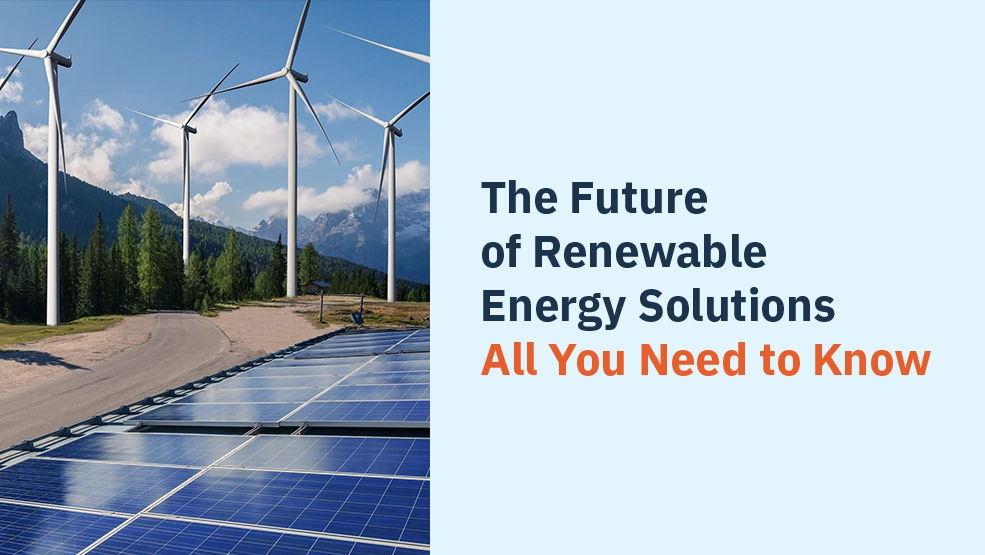Renewable energy has become an increasingly popular topic in recent years, and with increasing concerns about climate change and the environment, the need for renewable energy sources is also increasing. There has been significant adoption of the use of renewable energy in recent years, showing that people are now more receptive to alternative energy solutions. With more people willing to invest in green technology, the rate of adoption is making an upward trajectory.
The main reason for the increase in demand for renewable energy is that it has become more accessible to the public and the constant rise of greenhouse gas emissions. Earlier, choosing renewable energy for a selected niche was reserved for factories and large-scale industries. When this technology was made accessible to average consumers, it led to greater adoption, and more people began to see the benefits of clean energy.
The IEA (International Energy Agency) stated that the global renewable capacity is expected to increase by almost 2,400 GW (nearly 75%) between 2022 and 2027. The IEA goes on to mention that the main reason for this growth is the high fossil fuel and electricity prices resulting from the global energy crisis, which has made renewable power technologies more sought after.
Another reason why many businesses are adopting sustainable energy is that they recognize the effects of carbon emissions and their environmental impact.
Solar is still a dominating market
Solar PV (photovoltaic) capacity is an area that has garnered a lot of interest and is estimated to see continued growth. The IEA stated that PV generation increased by a record-breaking 179 TWh in 2021 to reach 1000 TWh; this clearly indicates that solar energy has come into its own, and is the go-to choice when it comes to renewable energy.
Solar PV is also cost-effective for generating new electricity, making solar panels ideal for future investments. Solar is expected to continue its upward trajectory over the next several years, surpassing a Terawatt of global solar power generation by 2023.
Hydroelectricity
Hydropower is a well-established source of renewable energy; it has been almost 150 years since it was first harnessed. Innovation in hydroelectricity is focused on increasing the flexibility of generating power. Hydroelectricity remains the most significant renewable electricity generation technology by capacity.
Looking toward the future, according to IEA, an average of 50 Gigawatts of new hydropower plants need to be connected to the grid annually to reach these estimated 5700Twh of annual electricity generation by 2023.
The future of hydroelectricity is enabling plants to fullfil the current demands of a modern system.
Geothermal power
Geothermal energy is the energy that is available as heat discharged from the earth’s crust. The energy is expelled from the surface of the earth in the form of hot water or steam and is used to power electricity-generating turbines. What’s fascinating about geothermal power is that it does not require any fossil fuels to be extracted, and the water that is harnessed can be pumped back into the surface of the earth and reused.
The US Department of Energy Geothermal Technologies Office’s (GTO) GeoVision analysis predicted that geothermal electricity production has the potential to increase at least 26-fold by 2050.
Offshore wind energy
Wind energy is something that we are familiar with and has been around for some time. Recently, offshore wind energy has been gaining traction. This trend is a good indication of the need to scale up offshore energy growth.
Creating more floating wind farms could tap into potential areas on the ocean where fixed turbines cannot be used. The main challenge needing to be addressed is how to minimize the environmental impact and safely export the power harnessed with wind turbines. It is estimated that the global offshore energy industry is projected to increase fifteenfold by 2040, which will make it a trillion-dollar industry in the next two decades.
Energy storage is a growing market
Energy storage refers to converting harnessed electrical energy into a form that can be stored and used later when needed. Finding ways to harness renewable energy can be quite challenging; but it is equally important to securely transmit and store this harnessed energy.
The recent EV trend has further increased the need for energy storage, and companies are looking for efficient storage solutions to help meet everyday needs.
The capacity of battery storage was not taken seriously before 2020; however, after 2020, there has been increasing demand to increase battery storage capacity with the rise of EVs. According to the EIA, by the end of 2025, battery storage capacity is expected to grow from 7.8 GW in 2022 to 30.0 GW by 2025.
Barriers hindering the growth of renewable energy
Though renewable energy seems to be the optimal way to ease the energy crisis and help our environment at the same time, there are a few challenges hindering the growth of this business.
New concept
Though renewable energy has been around for quite some time, in most people’s minds, it is still relatively new, and they are unaware of its potential. Most countries are invested in nuclear, coal, and natural gas—formidable markets to break into. Many businesses are still unsure about the feasibility of converting to renewables.
High costs
Setting up a renewable energy plant like a solar or wind farm requires high upfront costs, and installing a natural gas plant would cost much less. Though renewable energy is inexpensive to operate, maintenance is low, and fuel is literally free, the cost setting up a renewable energy plant seems to be a roadblock for many investors.
Reliability
There are several things that could be improved when it comes to the reliability of renewable energy. Questions arise about sustaining energy generation when there is no sunlight or when no strong winds are blowing. Advances made to storage technology can help address these very issues.
These are a few of the challenges that are hindering the growth of renewable energy. With greater awareness of the potential of renewables, and how their shortfalls can be overcome, we anticipate a bright future for the green energy market.
Conclusion
Today, most businesses and residents are exploring renewable energy options to meet their energy needs. Demand for renewable energy is increasing year-after-year, as people and businesses alike find conventional energy sources to be lacking and seek to offset their carbon footprint.
Recently we have seen an upward trend where energy from renewable energy sources can be effectively harnessed and stored to meet a growing demand. We can already see futuristic renewable technology in the pipeline, like artificial photosynthesis, ocean wave energy, or Bioenergy with Carbon Capture and Storage (BECCS).
These evolving technologies are setting the stage for a bright future in improving technology to harness and store energy from natural sources. Interested in learning more about renewable energy solutions? Subscribe to our newsletter today and get regular updates about developments in the renewable energy solutions.






